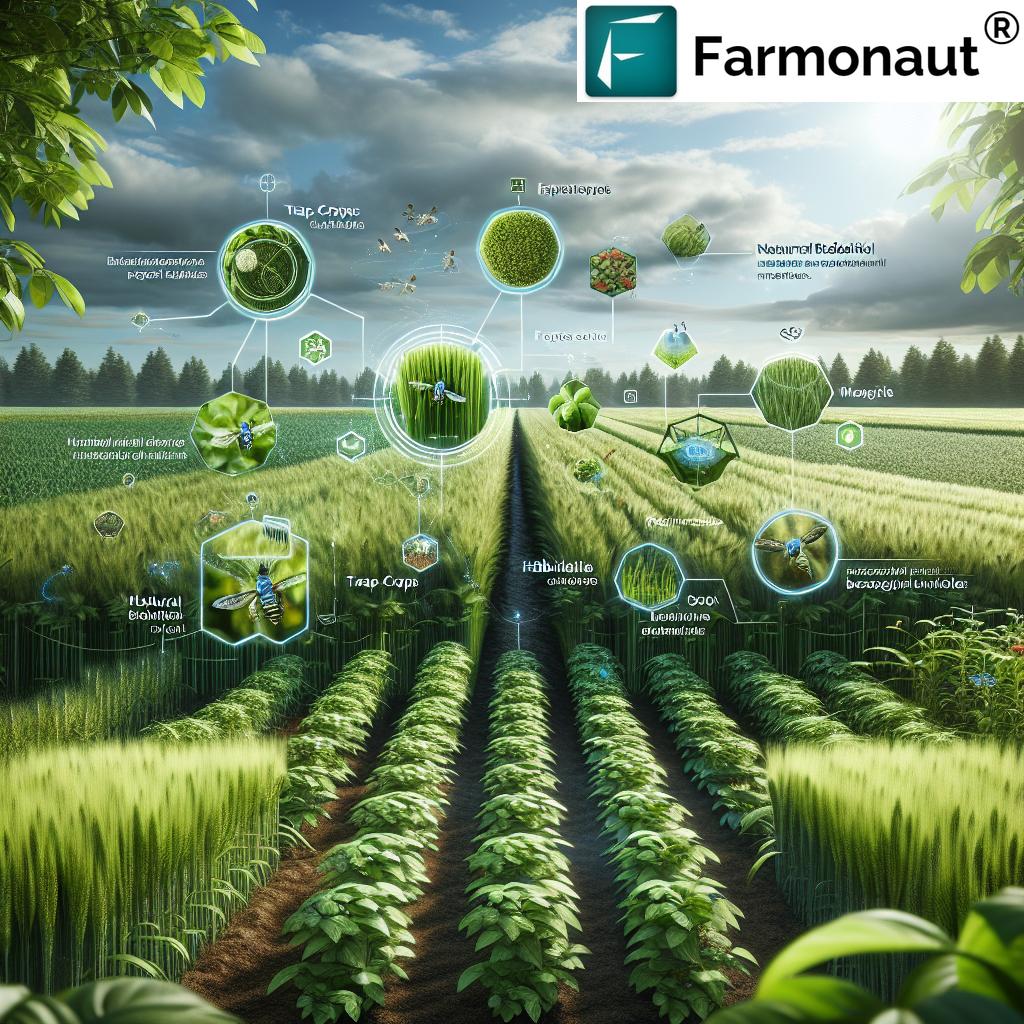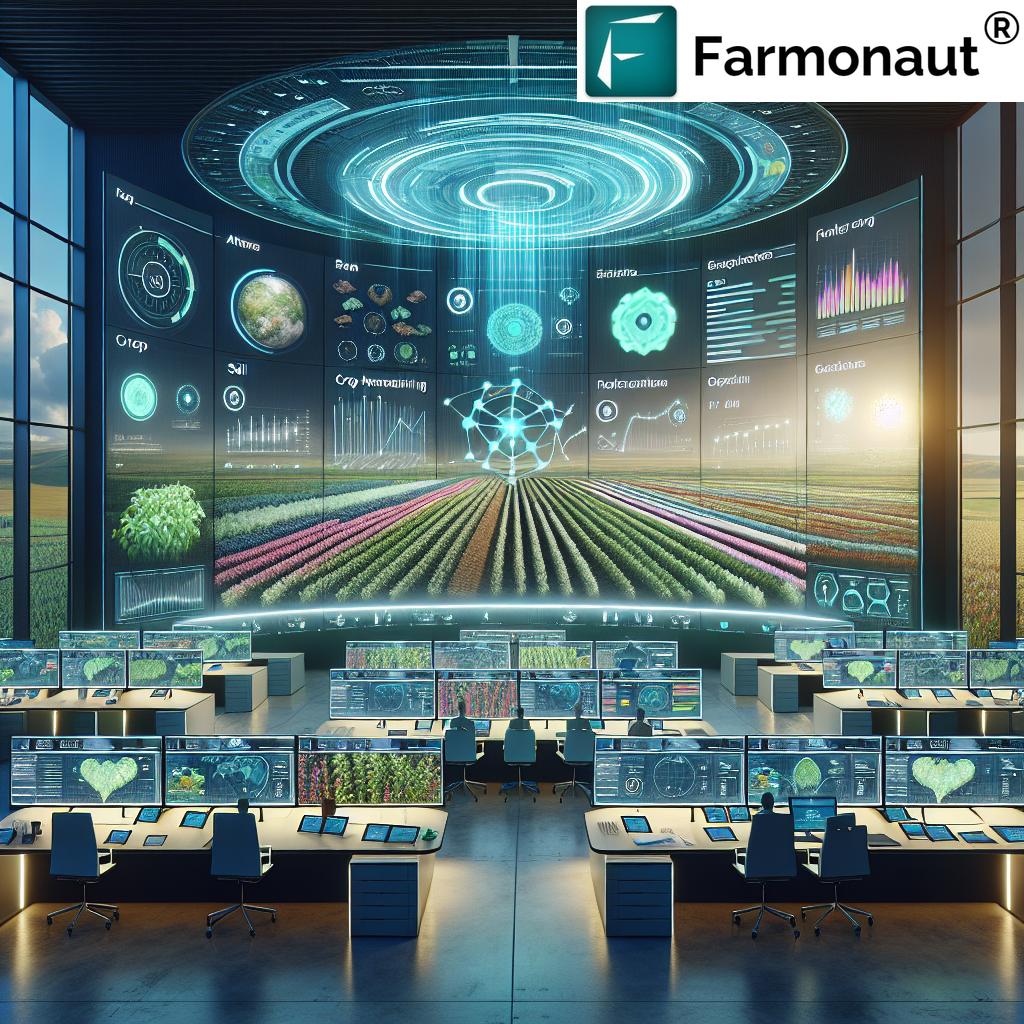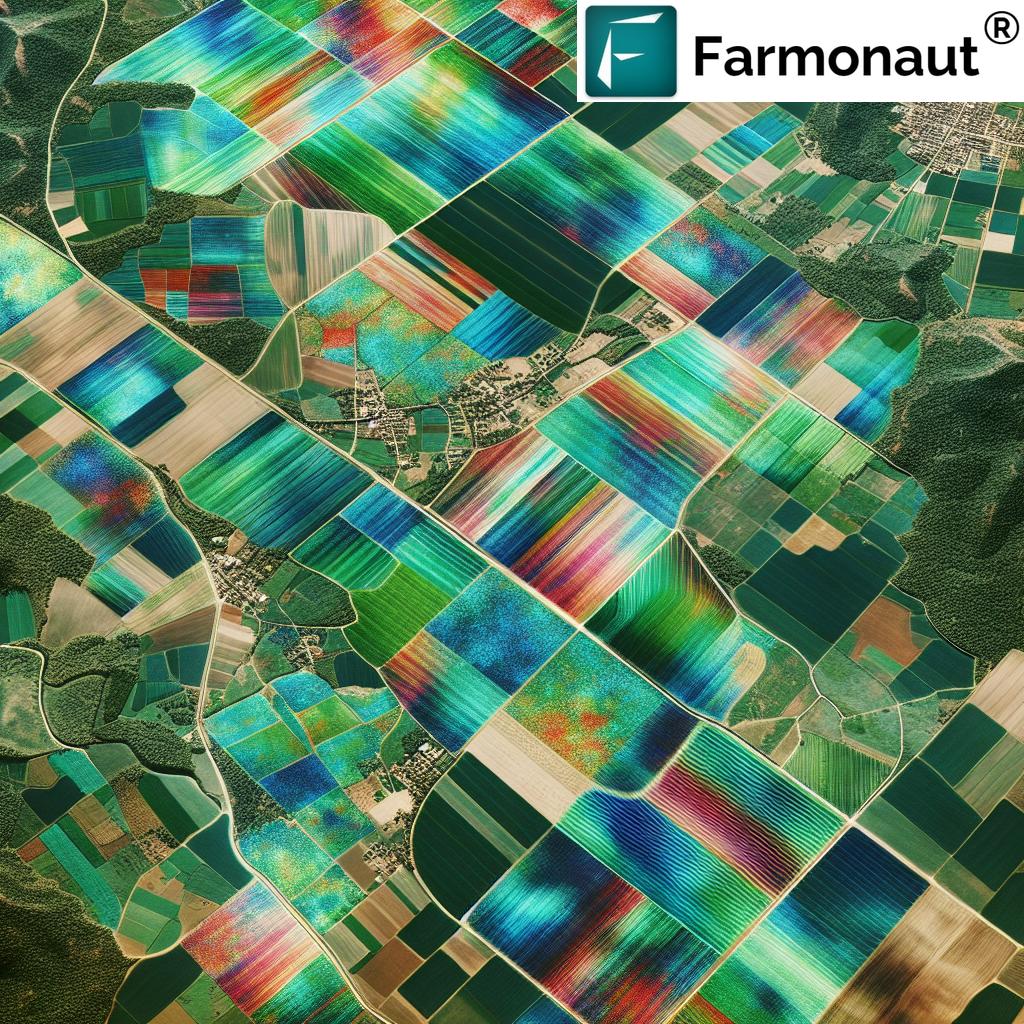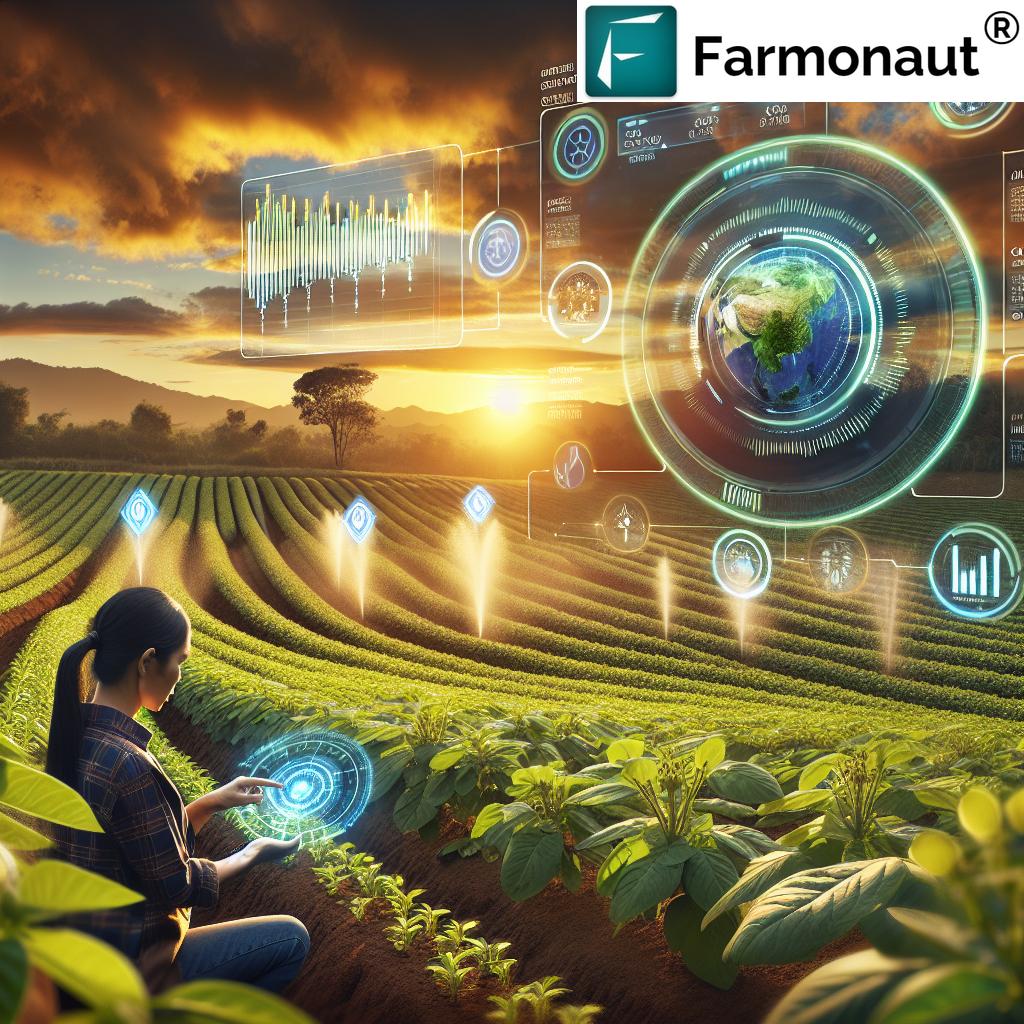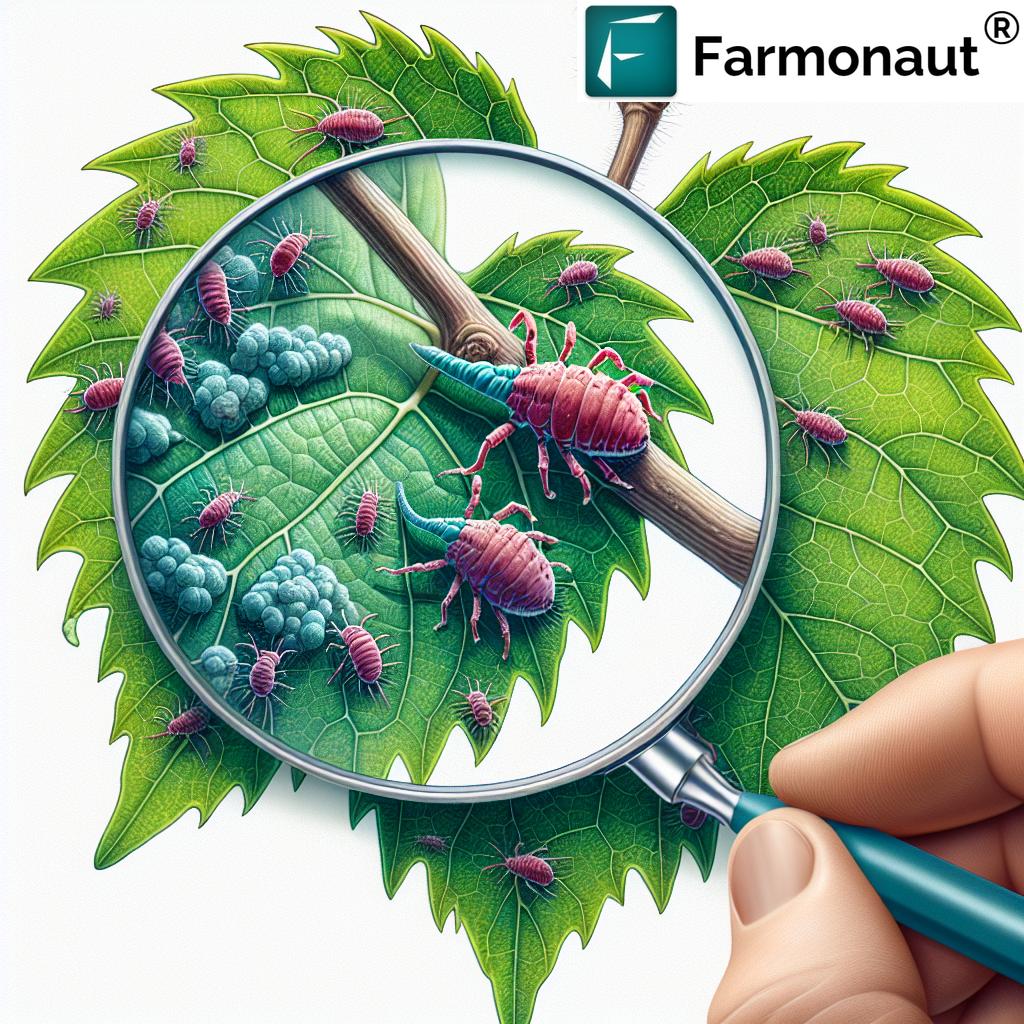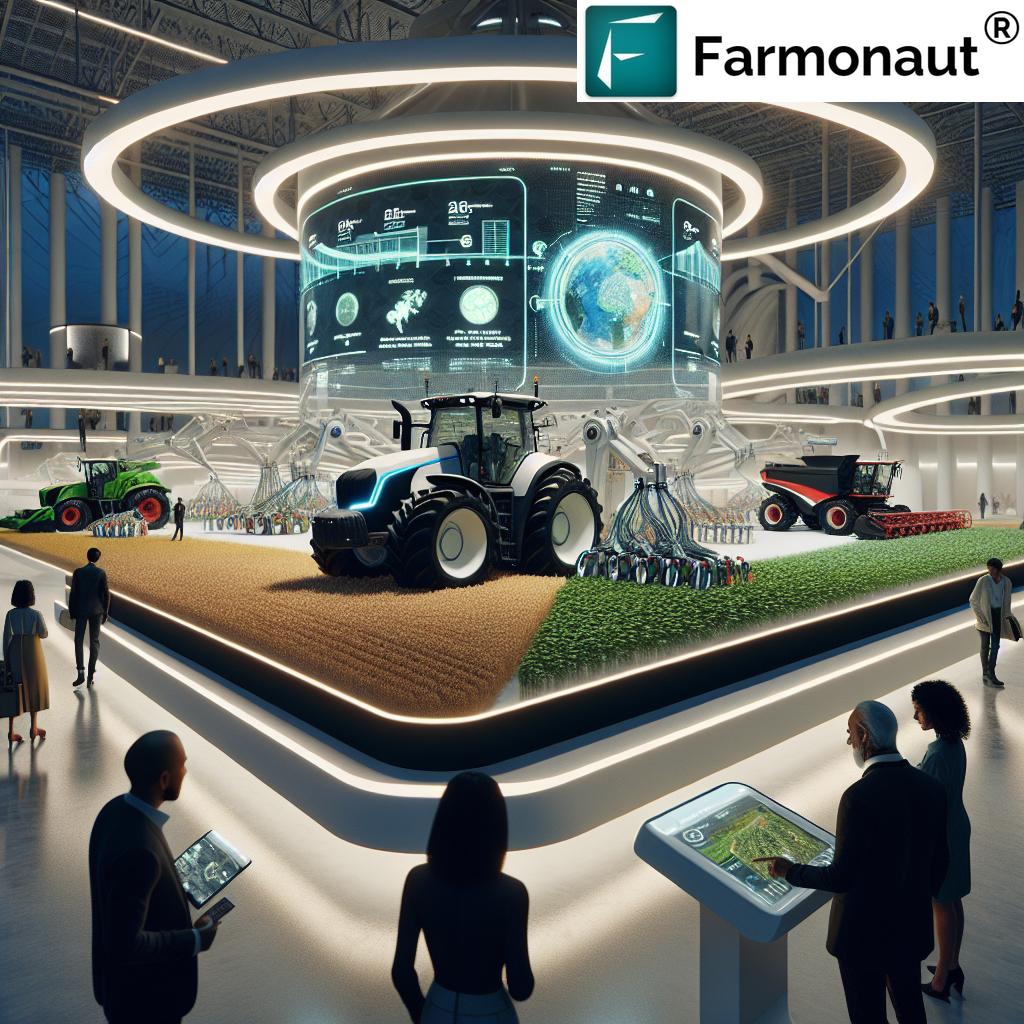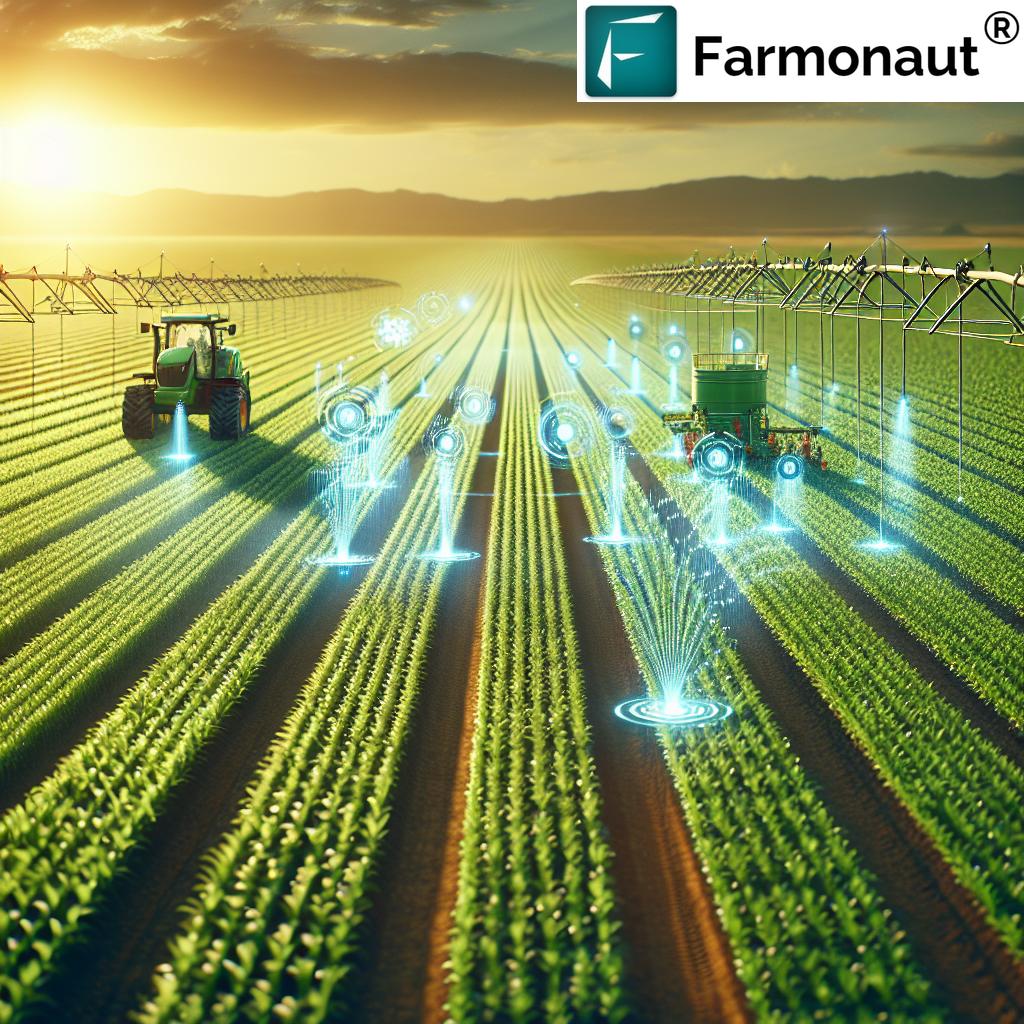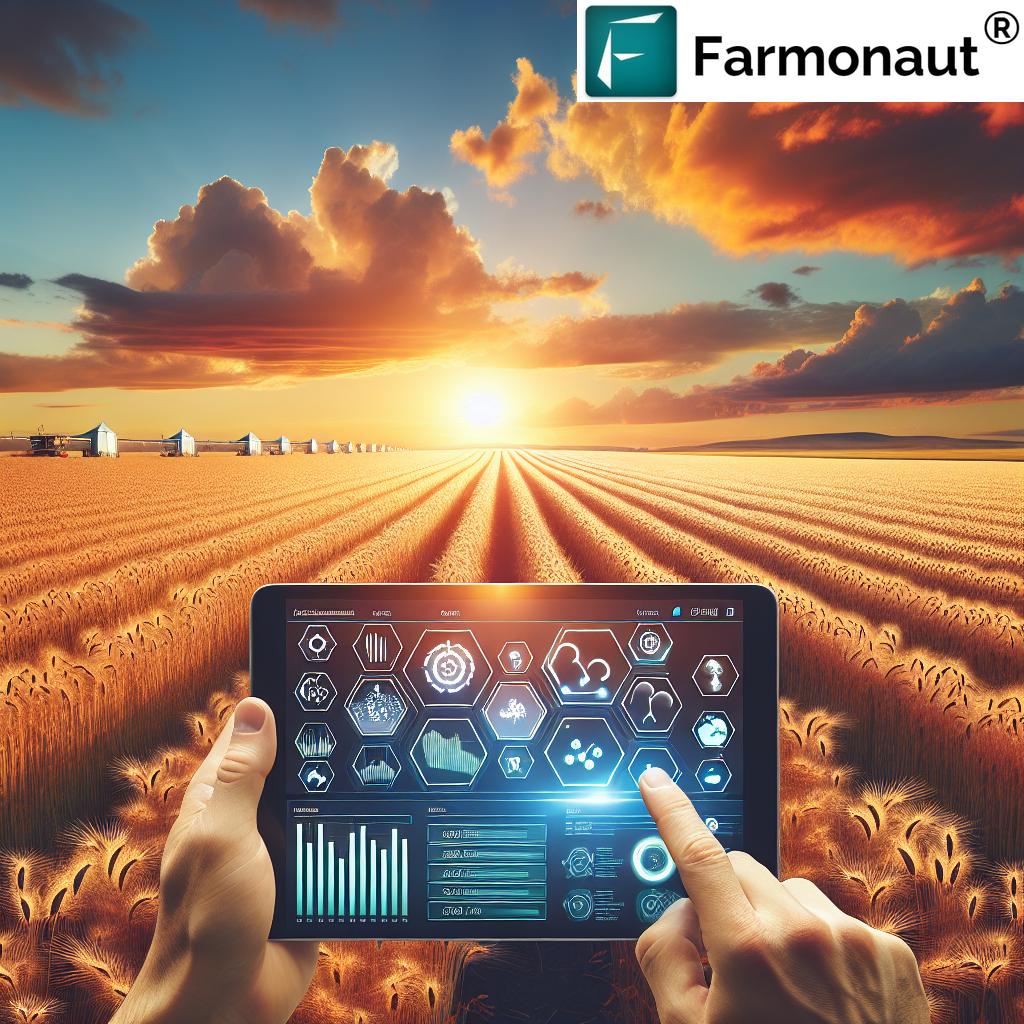7 Shocking Crop Protection Solutions for Huge Yields
“Over 70% of farmers using integrated pest management report a significant reduction in pesticide use and crop losses.”
Introduction: The Evolution of Crop Protection
Crop protection stands at the forefront of sustainable agriculture and food security. As global demand for food intensifies, so does the need for innovative solutions to manage pests, diseases, and environmental stresses that threaten crop yields. Today, we are witness to an agricultural revolution—where traditional wisdom merges seamlessly with modern technology and integrated pest management (IPM) forms the very core of sustainable farming practices.
Our journey through crop protection will span ground-breaking chemical and biological methods, cultural strategies, and the latest technological innovations like artificial intelligence, smart sprayers, and real-time satellite monitoring. We’ll also uncover how leading platforms—like Farmonaut—are democratizing access to precision crop management, reducing input costs, and empowering farmers across the globe.
“Modern crop protection technologies can increase yields by up to 30% compared to traditional farming methods.”
1. Integrated Pest Management (IPM): The Core of Modern Crop Protection
Integrated pest management (IPM) is the holistic approach at the heart of today’s crop protection strategies. IPM combines a range of methods and tools—from careful monitoring and action thresholds to targeted interventions—that together safeguard crops while reducing environmental impact and minimizing reliance on synthetic pesticides.
Key Components of IPM
- Regular Monitoring: We observe pest populations and diseases using precise field data and advanced surveillance—sometimes via satellites or IoT sensors for real-time insights.
- Action Thresholds: Instead of blanket spraying, we establish specific thresholds—pest population levels that warrant intervention to prevent economic harm.
- Diverse Methods: Effective IPM integrates biological, cultural, physical, and chemical strategies for a unified management program.
- Evaluation: IPM is a continuous process. We review results, adapt methods, and ensure ongoing effectiveness.
Benefits of IPM
- Substantial reduction in pesticide use—benefiting the environment and human health
- Lower risk of developing pest resistance
- Optimized yields & improved crop quality
- Cost-effective, sustainable farming practices
IPM truly represents a shift towards environmentally responsible, economically viable farming. With data-driven platforms like Farmonaut, even smallholder farmers can implement and track IPM actions across their fields—directly from their smartphones.
2. Chemical Control in Agriculture: From Pesticides to Nanopesticides
Chemical control in agriculture remains a crucial line of defense against devastating pests and crop diseases. Historically, broad-spectrum synthetic chemicals were applied liberally to fields. However, this approach generated several concerns:
- Adverse impact on the environment—harming beneficial species and contaminating soil/water
- Pest resistance building up through repeated exposure
- Human health risks linked to pesticide residues
The industry now emphasizes precise, science-based applications and the development of advanced chemical solutions—with nanopesticides in crop protection leading the way.
How Nanopesticides Are Revolutionizing Crop Protection
- Lower Quantity Needed: Nano-formulations magnify effectiveness, so we use less chemical overall.
- Targeted Delivery: Nanotechnology can release active ingredients only when pests or diseases are present—reducing contamination and protecting non-target organisms.
- Controlled Release: Formulations can be engineered for slow, precise release, extending protection and minimizing environmental burden.
- Minimized Off-target Effects: Reduces risk to beneficial insects, soil microbes, and water sources.
Example: Precision Spraying
Emerging technologies, like AI-powered smart sprayers for agriculture, adjust spray application using real-time data. This ensures chemicals are only used where needed, optimizing inputs and further reducing the environmental impact of pesticides.
While chemical control remains part of our toolbox, the future demands balance—applying the right quantity of the right product, at the right time, reinforced by advanced technologies.
3. Biological Pest Control Methods: Harnessing Nature’s Enemies
In biological pest control methods, we “fight nature with nature.” This means leveraging the power of natural predators, parasites, and pathogens to control pest populations and restore ecological balance—with minimal disturbance to the environment.
Major Approaches to Biological Control
-
Importation (Classical Biological Control):
Introducing natural enemies (e.g., parasitoid wasps, predatory beetles) from a pest’s native region to eliminate invasive species. -
Augmentation:
Releasing extra beneficial organisms—such as ladybugs for aphid management—at key times in the crop cycle. -
Conservation:
Implementing practices (like limiting disruptive chemicals or providing refuges) to protect existing predators and parasites already present in the field.
Examples of Effective Biological Control
- Ladybugs & Aphids: Ladybugs are voracious predators of aphids, providing natural pest control in fields and orchards.
- Trichogramma Wasps: These tiny wasps lay eggs inside pest eggs, controlling lepidopteran pests while being harmless to crops and people.
- Entomopathogenic Fungi: Used to specifically target and infect soil-borne insect pests—with minimal environmental impact.
Biological control is indispensable in organic farming, IPM programs, and sustainable farming practices—enhancing biodiversity, supporting ecological balance, and reducing reliance on chemicals.
4. Cultural Control: Smart Farming Practices for Pest Resistance
Smart cultural control strategies harness farming techniques that disrupt pest and disease cycles, making life difficult for threats while supporting crop health and yield quality.
Key Examples of Cultural Control
- Crop Rotation: Rotating key crops each season disrupts the buildup of specific pests and diseases in the soil.
- Intercropping: Growing multiple crop species together can confuse pests, reduce disease transmission, and naturally shade weeds.
- Adjusting Planting/Harvesting Dates: We can avoid peak pest periods—e.g., seeding before or after major insect emergence.
- Resistant Varieties: Selecting crop varieties with inbuilt resistance to common pests or diseases minimizes the need for interventions.
By continually refining cultural practices, we not only reduce reliance on chemicals but also enhance long-term sustainability and the effectiveness of integrated management programs.
Want advanced insights into crop rotation, soil health, and climate-smart farming?
Farmonaut’s Jeevn AI advisory system delivers personalized recommendations based on satellite and ground-based data—optimizing cultural practices for every field.
“Modern crop protection technologies can increase yields by up to 30% compared to traditional farming methods.”
5. Physical & Mechanical Methods: Precision Barriers for Crop Protection
For centuries, physical and mechanical control has underpinned effective crop protection by creating tangible barriers or directly removing pests—without chemicals.
Examples of Mechanical & Physical Techniques
- Protective Netting: Fine mesh nets keep insects, birds, and hail away from valuable crops, especially in fruit and vegetable production.
- Sticky & Light Traps: Attract and capture flying insects—supporting population monitoring and IPM decision-making.
- Tillage: Strategic tillage operations can disrupt soil-borne pest life cycles by exposing larvae and eggs to predators and the elements.
- Hand Removal: Labor-intensive but effective for small plots or high-value crops under attack.
While some physical methods require more labor, they are invaluable in organic farming systems, NPM strategies, and situations where chemical use is undesirable or restricted.
6. Non-Pesticidal Management (NPM): Farming Solutions for Organic and Beyond
Non-Pesticidal Management (NPM) showcases our commitment to sustainable farming practices and environmental stewardship. In NPM, all pest and disease control is achieved through natural, cultural, mechanical, and biological methods—with zero synthetic pesticide input.
NPM is indispensable in organic farming, sensitive areas, and in fields where resistance or contamination is a concern. It offers the following techniques:
- Biopesticides: Derived from natural enemies such as bacteria, plant extracts (e.g., neem oil), or fungi, these target specific pests without harming the environment.
- Trap Crops: We strategically plant species more attractive to pests than the main crop—drawing threats away for later removal.
- Habitat Manipulation: Creating diverse field borders/hedgerows that attract beneficial insects and disrupt pest movement.
- Manual Techniques: Including hand removal or using barriers.
NPM represents the most environmentally friendly and human health-conscious approach to crop protection. While sometimes labor-intensive or slower acting, it preserves long-term soil, water, and farm ecosystem health.
7. Technological Innovations in Farming: AI, Satellites & Smart Sprayers
We now stand in an era where technological innovations in farming are transforming how we monitor fields, detect threats, and implement solutions for effective crop protection.
Top Innovative Technologies Enhancing Crop Protection
-
Satellite-Based Crop Monitoring:
Platforms like Farmonaut use multispectral imagery to provide deep insights into crop health, pest risks, and stress anomalies—so we can target interventions with scientific precision. -
AI-Powered Advisory Systems:
Jeevn AI by Farmonaut analyzes crop, weather, and field data to recommend timely management actions—guiding when and what to spray, rotate, or monitor. -
Smart Sprayers for Agriculture:
These advanced sprayers adjust droplet size, spray angle, and flow based on field data—optimizing chemical use, limiting waste, and minimizing environmental contamination. -
Robotic and IoT-Driven Systems:
Autonomous sprayers and sensor networks allow for precise control and remote field management, with actionable alerts for emerging threats. -
Blockchain Traceability:
Farmonaut’s blockchain-based traceability solution ensures that every stage—from seed to harvest to consumer—can be transparently tracked, supporting safe, authentic, and responsible agriculture. -
Carbon Footprinting:
Farmonaut tracks and helps reduce the carbon footprint of agricultural processes, supporting compliance with sustainability regulations and best practices. -
Fleet & Resource Management:
Digital fleet and machinery management tools help agribusinesses schedule, monitor, and optimize field operations—resulting in cost savings and increased efficiency.
These technologies not only enhance decision-making for pest, disease, and crop health management but also support sustainable, scalable, and profitable farming in all environments.
Interested in automating crop monitoring or integrating advanced advisory into your farm?
Farmonaut’s API and Developer Documentation make it simple for agtech developers and businesses to add these services into their workflows—driving precision and growth across the agricultural value chain.
Comparison Table: Modern Crop Protection Solutions at a Glance
| Solution Name | Technology / Method Used | Pest/Disease Targeted | Estimated Yield Improvement (%) | Environmental Impact | Adoption Level |
|---|---|---|---|---|---|
| Integrated Pest Management (IPM) | Monitoring, thresholds, multiple strategies | Insects, fungi, weeds, viruses | 15–30 | Low | Widely Adopted |
| Nanopesticides | Nano-technology for precise chemical release | Insects, fungi | 10–25 | Medium–Low | Emerging |
| Biological Control | Natural enemies, augmentation, conservation | Insects, weeds, nematodes | 12–22 | Low | Widely Adopted |
| Cultural Practices | Crop rotation, intercropping, timing | All major crop pests/diseases | 8–18 | Very Low | Widely Adopted |
| Physical & Mechanical | Nets, traps, tillage, hand removal | Insects, rodents, weeds | 5–15 | Very Low | Emerging/ Niche |
| Non-Pesticidal Management (NPM) | Biopesticides, habitat, manual control | Weeds, aphids, mites, local pests | 5–12 | Lowest | Emerging/Organic |
| Technological Innovations | AI, IoT, satellite, blockchain, smart sprayers | All major pests/diseases, resource misuse | 20–30+ | Lowest | Emerging/Scaling Fast |
*Values are typical ranges; actual effectiveness and adoption depend on local context, crop, climate, and implementation quality.
Farmonaut: Advanced Technology for Sustainable Crop Protection
As pioneers in smart agriculture, we at Farmonaut are committed to making precision crop protection affordable and accessible to farmers, agribusinesses, governments, and NGOs—globally.
What Sets Farmonaut Apart?
-
Real-Time Satellite Monitoring:
Our platform delivers NDVI vegetation health data, soil moisture maps, and detailed pest/disease risk alerts—helping optimize every decision from irrigation to spraying. -
Jeevn AI Advisory:
A personalized AI system delivering real-time management tips, weather insights, and strategic advice for maximizing crop yield and quality. -
Blockchain Traceability Integration:
Trace every step of your harvest, ensuring trust and transparency in food and fiber supply chains. -
Fleet Management:
Digitally track and manage your farm vehicles and machinery for safer, more efficient operations. -
Carbon Footprinting:
Calculate, monitor, and reduce the carbon impact of your field practices—supporting large-scale sustainability initiatives. -
Crop Loan & Insurance:
Satellite-based verification to streamline loans and reduce fraud—giving farmers and lenders peace of mind. -
API & Developer Tools:
Build your own innovations with our robust API and documentation.
Whether you manage a single plot, a plantation, or an agribusiness fleet, Farmonaut equips you to monitor, protect, and enhance your crops with precision.
Cross-Platform Access for All
Take charge of your fields—anytime, anywhere. Access Farmonaut via:
Sustainable Crop Protection: Trends and Future Directions
The future of crop protection lies in integrating all effective solutions—from tradition to technology, from IPM and biological control, to AI-driven advisory and nanopesticides. Here’s what we see on the horizon:
- Increased Integration: IPM will become the universal gold standard, combining cultural, biological, physical, and precision chemical methods.
- Advanced Monitoring: Satellites, drones, IoT sensors, and AI will deliver instant, field-specific alerts.
- Smart Application Systems: Precision sprayers, VRT (Variable Rate Technology), and robotic applicators will further reduce pesticide use and environmental impact.
- Eco-Compatible Innovations: Biopesticides, natural enemies, habitat management, and advanced NPM strategies will flourish, especially in export agriculture and organic markets.
- Transparency & Traceability: Blockchain and digital certification will be commonplace, empowering consumer trust and compliance.
- Climate Responsiveness: Greater use of carbon footprinting technology to monitor and reduce environmental footprints.
- Education & Accessibility: Affordable, intuitive platforms (like Farmonaut) will bridge the gap for farmers everywhere—ensuring no one is left behind in the technological leap.
FAQ: Crop Protection Solutions Demystified
What is the most sustainable method for crop protection?
The most sustainable approach is Integrated Pest Management (IPM), which combines many methods (biological, cultural, chemical, mechanical) based on real-time monitoring and field data to ensure effective pest and disease management while minimizing environmental and human health risks.
How do technological innovations enhance pest control?
Technological innovations—like AI-driven advisory, satellite-based field monitoring (see Farmonaut), smart sprayers, and blockchain—enable highly targeted, data-backed interventions, reduce chemical inputs, increase yields, and support transparent, sustainable farming practices.
Are nanopesticides safe for the environment?
Nanopesticides are engineered for precise delivery and controlled release, so they require smaller quantities, reducing off-target effects and crop residue. When used as part of a comprehensive IPM strategy, they help in reducing environmental impact of pesticides.
What are some examples of non-pesticidal management?
Non-Pesticidal Management (NPM) includes the use of trap crops, biopesticides, habitat manipulation (e.g., flower strips), and manual/mechanical removal of pests—all aiming for natural control without synthetic chemicals.
How can I start using smart crop protection tools on my farm?
Start with platforms like Farmonaut, which provides easy mobile and web tools for real-time crop monitoring, AI advisory, and resource management. These tools are scalable for both smallholders and large enterprises.
Conclusion: Protecting Crops, Sustaining Futures
The realm of crop protection has evolved from a battle with pests to a science of balance, efficiency, and sustainability. By embracing integrated pest management, harnessing natural allies, deploying precision chemical and biological strategies, and unleashing the potential of technological innovations, we can ensure robust yields—protecting both our crops and our planet.
In this journey, platforms like Farmonaut stand at the forefront, making advanced crop health monitoring, AI-driven advice, and real-time data available to every farmer. As we move forward, let us continue to integrate smart solutions, reduce environmental footprints, and steward agriculture towards a more sustainable, healthy, and responsible future.
Discover the future of farming—start using Farmonaut today to optimize your crop protection, ensure huge yields, and join the leadership in sustainable global agriculture.





